Marketers love to say that the only constant in marketing is change. In some ways, that’s true. For example, in 2025, we’ve seen massive changes in the use of AI across search engines, web development, social media, and analytics tools. Meanwhile, branding, which was once considered a fluffy marketing buzzword, is taking center stage.
But luckily, not everything is changing. A few B2B web design strategies continue to form the foundation for success. Visually compelling websites with engaging content continue to outperform the competition. Content that focuses on specific buyer personas can still increase conversion rates. And data and analytics are still the best tools in every brand’s arsenal.
To help you focus on the right B2B website strategies in 2026, we’ve broken down key trends and tips into four areas: design and development, content and SEO, compliance and legal concerns, and success measurement.
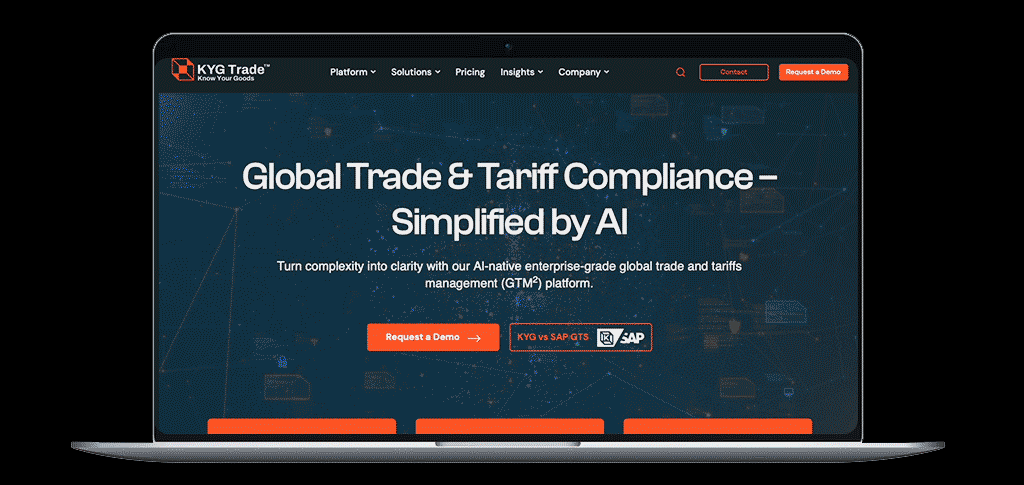
Web design focuses on holding attention
Getting B2B buyers to your website is one thing, but keeping them there is quite another. In 2026, we’ll see successful B2B brands focus on website elements that keep visitors actively engaged with content.
Scrollytelling
Scrollytelling uses cohesive copywriting to tell users a story as they scroll down a page. Using a tight message framework, scrollytelling funnels visitors towards important information and encourages them to engage with CTAs. The content may be accompanied by animations like float-in images and text that types itself into view, which are visually appealing and prevent users from skimming key points. You can also pair your story with parallax or horizontal scrolling animations that are proven to reduce bounce rates.
Micro-interactions
Another engagement-boosting B2B web design tip is to incorporate micro-interactions. Micro-interactions are small, functional animations that enhance the overall user experience. They provide instant feedback for user actions – like animating buttons when clicked, displaying subtle confirmation messages, or showing loading progress. These small design details make digital interactions feel smoother and more natural, guiding users through tasks with less friction and more confidence.
AI has enhanced micro-interactions by enabling real-time personalization. Websites can now adapt interactions based on user behavior, such as showing smart tooltips when someone hesitates, or offering predictive form suggestions. Personalized greetings, adaptive UI elements, and behavior-triggered animations help create a more engaging and user-specific experience that feels both helpful and, ironically, human.
Clean, flexible, back-end design
Website visitors probably aren’t thinking about the back-end and CMS work that go into creating a well-functioning website, but your team should be. A clean, well-developed design system ensures your website looks consistent and maintains the brand’s integrity. Ideally, your internal team should be able to update pages, add new content, and make basic design changes without needing developer assistance.
Important: This doesn’t mean choosing a “drag and drop” CMS at the expense of important B2B capabilities. Rather, it means combining a scalable, user-friendly CMS like WordPress with page builders like Elementor to gain design control and support complex B2B marketing tech stack integration.
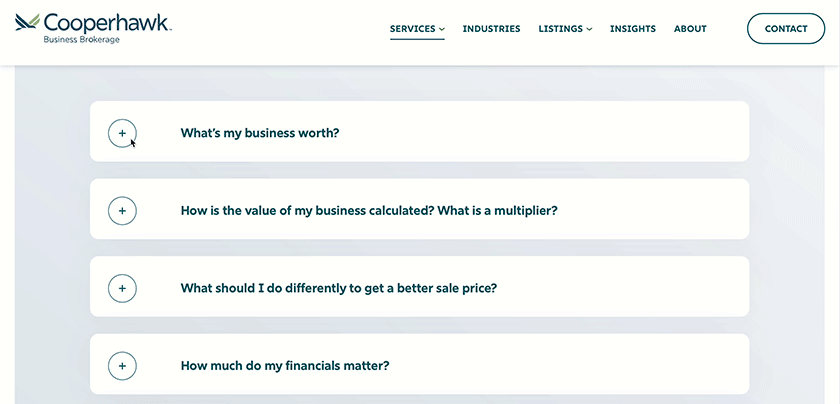
Content and SEO emphasize clarity
Yep, SEO is still alive and content is still king! So what’s changing? Well, SEO has some new AI-powered friends you’ll need to pay attention to, and credible content that caters directly to the user journey is now table stakes.
SEO, AEO, and GEO
We love a good acronym, and SEO is now joined by Answer Engine Optimization (AEO) and Generative Engine Optimization (GEO). AEO focuses on creating content that can be used in featured snippets, AI overviews, and by voice search tools like Google and Siri. GEO is similar, but focuses on creating content that generative AI platforms like ChatGPT, Perplexity, and Microsoft Copilot will want to use as sources.
SEO is still important, but AI tools are eroding organic clicks by providing answers directly on the SERPs or in chats. In fact, many searches are now considered zero-click, meaning a user gets what they need from the AI overview or voice search tool. So, while ranking well on Google remains a key goal, you’ll also want to focus on creating content that can be easily accessed, understood, and used by AI engines. You can do so by:
- Including structured data that tells AI engines what the page is about.
- Providing clear, authoritative answers to content-related queries.
- Structuring content into easily digestible information like bullet points, charts, blog summaries, and FAQs.
- Using semantic content to build authority around a topic and increase the chance of citation.
Website searchability
The goal of a successful website is to meet users wherever they are in their online buying journey. Having a structured content strategy and well-designed navigation helps visitors stay on your site longer, find what they are looking for, and become more knowledgeable by the time they become a lead. This isn’t a new idea, but it’s something teams should expand on and refine in the coming year.
In 2026, we’ll see B2B websites optimize navigation to easily allow visitors to find information based on solutions, services, products, use cases, industry, region, and even their role. At Bop Design, we are also developing content and adjusting navigation based on competitor pages. Breadcrumbs and internal linking continue to play an important role, guiding visitors to related content that nudges them to take action.
Credibility and trust building
AI usage may be going up, but so is buyer skepticism – especially in the B2B industry. That means it’s especially important to create accessible, transparent, and credibility-supporting content across your website.
What is credibility-supporting content? It’s provable, qualitative, and quantitative data that increases visitor confidence in your marketing claims. Examples include customer testimonials, case studies, certification badges, and even ratings from third-party review websites. Internal data, such as the number of customers, turnover rates, and ESG targets and progress numbers, also build trust.
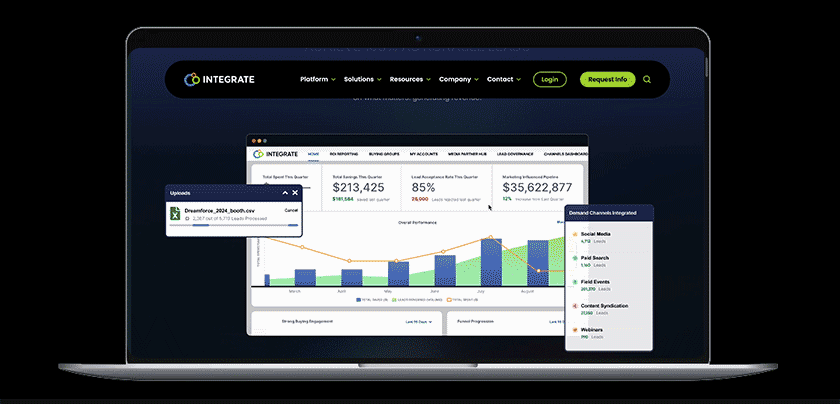
Bop Design client, Integrate, saw this trend growing and took action early, asking us to upgrade its website to reflect the platform’s sophistication and attract enterprise-level leads. Our work included creating clear, clean messaging, updating navigation, and separating software and services-oriented content. We also replaced generic stock imagery with custom graphics and animations, along with visual representations of the software designed to showcase its user-friendly interface. Over the course of six months, Integrate saw an 18% increase in organic search traffic and a dramatic 119% increase in engaged sessions per user.
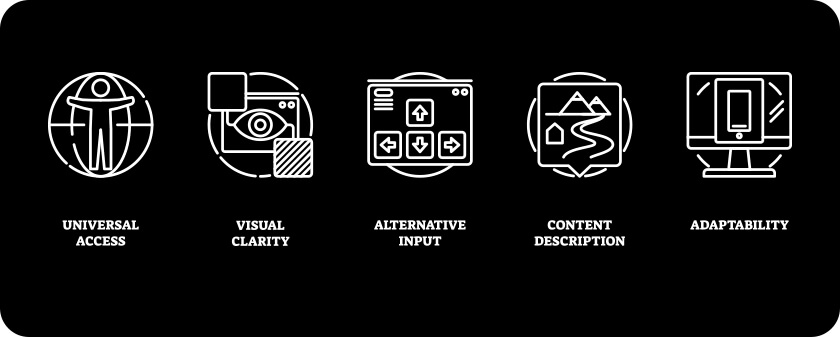
Design prioritizes legal and compliance details
With growing public awareness and stricter regulations around data use, building trust through transparent, user-centric digital experiences is essential. A well-designed B2B website combines privacy and legal compliance with accessibility to meet a wide range of visitor expectations.
Privacy-first design
Ethical and privacy-first website design centers on user rights and well-being by ensuring transparency, consent, and data protection throughout the digital experience. It avoids manipulative practices, limits data collection to what’s necessary, and clearly explains how information is used.
Make sure that your website features clear data usage consent options, and adheres to any cookie compliance requirements in the user’s region. Display any certifications your website and software have earned for security and data protection. With laws around data privacy becoming increasingly complex, it’s also essential to include a policy page that clearly lays out your process for data collection and usage. Prioritizing ethics and privacy not only respects users — it also builds long-term brand loyalty in a privacy-conscious world.
User accessibility
From a buyer perspective, accessible design elements show that your brand meets users where they are and respects their needs. From an SEO and GEO point of view, accessible design makes it easier for search engines to understand your website’s content. It’s a true win-win.
To ensure your website is accessible, make sure all images have alternative text, that background and foreground colors meet an appropriate contrast ratio, and that buttons and text are easily discernable. If your website features video elements, add captions or transcripts where possible. For more information and full guidelines, visit the W3C website.
Legally sourced images
We know this one sounds obvious, but AI-generated images are leading to plenty of legal questions around image ownership and usage. Is an AI image based on a similar artist rendering plagiarized? Should the original artist get credit, or the AI platform? Which images are public domain, and which require licensing? Get the answer wrong and you might be on the receiving end of fines or other legal actions.
To protect your business, we recommend using only licensed stock photography – paid subscriptions from reputable providers (e.g., Shutterstock, Getty, Adobe Stock). These vendors ensure your team has access to legally cleared, high-quality images that cover most business uses. Plus, subscriptions often include indemnification if disputes arise.
On the flip side, avoid using random online images. Don’t pull photos from Google Images or social media without explicit permission from the creator. Always verify usage rights before publishing. Be cautious with AI image tools – while they offer convenience, ownership rights and training data sources are still legally murky. Only use AI images if the provider offers clear commercial licenses and indemnification, and keep documentation of the terms.

Analytics capture new success metrics
Sifting buyer behaviors and technology changes are making it difficult for B2B marketing teams to identify the right key performance indicators (KPIs). SEOs argue about whether impressions matter when AI overviews often result in zero clicks. Email marketing managers struggle with open rates and click rates that accidentally include bot traffic as email providers try to pre-emptively sift through promotional content. Social media follower counts mean little without engagement, and that engagement can take many different forms.
Luckily, data from your B2B website still holds its value. To understand your website’s performance and make important strategic decisions, pay attention to the KPIs that most directly impact your sales success. A properly designed website that’s integrated with marketing and analytics tools should be able to provide important data like:
- Incoming traffic: Buyers from different channels (social media, organic search, AI referrals, etc.) may visit, engage with, and convert on your website at different rates. This information can help you adjust marketing efforts to focus on the most effective channels.
- Form fillouts/conversions: This data shows where visitors on your website are interacting with forms, and which forms are getting the most attention. Use this data for conversion rate optimization projects.
- MQL-to-SQL rate: Not every form submission is a good fit for your business– some aren’t even real people. The number of digital leads that become sales-qualified leads can help you make changes to identify and capture more of your ideal potential buyers.
- Pageviews and user journeys: Understanding which pages bring in the most traffic, hold visitor attention the longest, or lead people deeper into your website can help you identify impactful content.
- Keyword positions: Higher page rankings on search engines directly correlate with increased website traffic, especially those on Page 1 and in the top five. Additionally, the same tactics that help your content rank for target keywords can also make your website a top source for AI platforms.
- Core Web Vitals: A known Google ranking signal, Core Web Vitals measure user data over a 28-day period to understand website performance and its impact on user behavior. Using this information, you can optimize your website’s page load speed, interactivity, and visual stability to reduce user frustration and bounce rates.
Your B2B marketing team may spend tons of time and money keeping your website up to date, but unless you have streamlined reporting that gets reviewed on a regular basis, you may be focusing on the wrong areas. Defining your KPIs can be different for each company depending on your goals, and it can be easy to become overwhelmed with so many data points. We recommend picking out your top three KPIs to help keep your team focused and encourage regular progress.
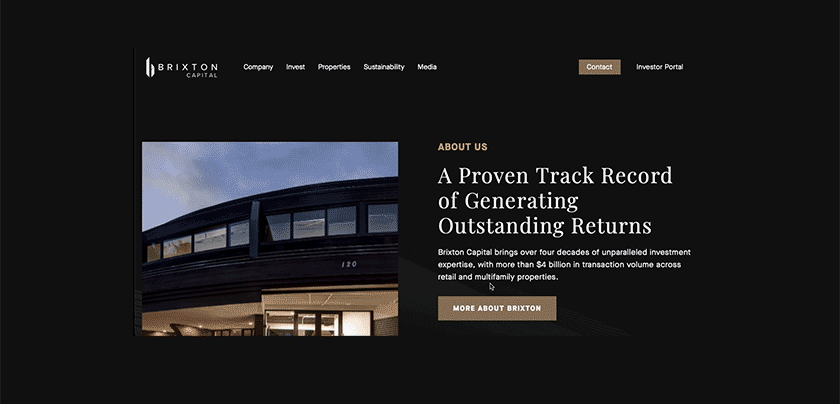
Get the most out of your B2B website
In 2026, we expect B2B website design to focus heavily on visually appealing, often interactive elements that tell stories and guide visitors toward key product and service information. Website transparency and credibility will continue to grow in importance as buyer skepticism intersects with AI platform usage. Furthermore, some metrics that used to signal success have lost their meaning, while engagement data provides more impactful KPIs.
Bop Design can help you update your existing B2B website design with stunning visuals and seamless functionality, or create a new website from the ground up. We approach every project with intention, expertise, and the personal attention to detail our clients deserve.
Don’t wait for 2026; contact us today to get started.



